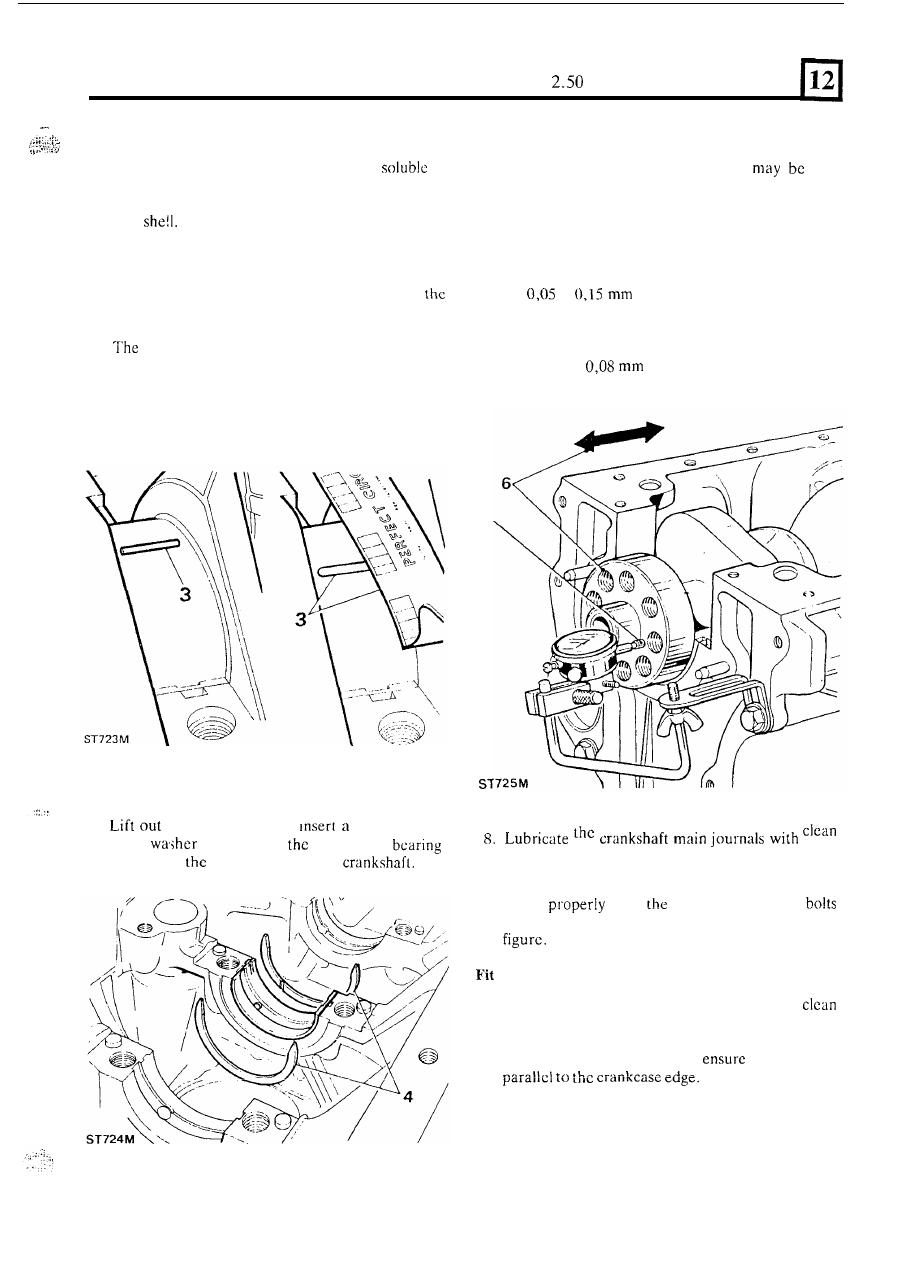Defender 90 / 110 / 130. Manual - part 39

.
LITRE DIESEL ENGINE
..
...
...
3 . Locate the crankshaft
in
position
on the upper
bearing halves in the crankcase and wipe any oil
from the ,journals since ‘Plastigauge’ is
i n
oil. Place a piece of ‘Plastigauge’ across the lower
half of each crankshaft journal or lower bearing
cap
Fit
the cap and tighten to the correct
torque. Remove the cap and bearing and using the
scale supplied with t h e ‘Plastigauge’ measure the
flattened ‘Plastigauge’ at
i t s
widest point. The
graduation that
most
closely corresponds
with
width of the ‘Plastigauge’ indicates the bearing
clearance.
correct clearance with new or overhauled
components is included
in
“General specification
data” section. If new bearings are being fitted use
selective assembly to obtain the correct clearance.
Wipe off, not scrape the ‘Plastigauge’ with an oily
rag
from the journals
or bearings.
,
Adjust crankshaft end-float
5.
Place the crankshaft
in
position in the crankcase
and mount a dial test indicator to read-off the end
of the crankshaft. A feeler gauge
used
instead of an indicator.
6.
Determine the end-float by moving the crankshaft
away from
t h e
indicator and
zero the dial. Move
the crankshaft
i n the opposite direction and note
the indicator reading. Alternatively measure the
clearance
with
a feeler gauge. The end-float should
be
to
(0.002 to 0.006 in).
7.
If adjustment is required substitute with oversize
thrust washers. Variation of thrust washer
thickness at each side
of crankshaft journal must
not exceed
(0.003 in)
to
ensure
t h a t
the
crankshaft remains centralised.
5
4.
the crankshaft and
standard size
engine oil and
fit
the appropriate bearing caps and
lower shells to the crankcase
with
the exception of
thrust
both sides of
centre main
saddle with
grooves towards the
number five main bearing. Ensure that the caps
locate
o v e r
dowels. Using new
and washers evenly tighten to the correct torque
rear main
hearing
cap
9. Ensure that number five main bearing cap is
and free from old cork seal material.
Attach the cork seal guides number
270304
to
the
crankcase, as illustrated, and
that they are
75